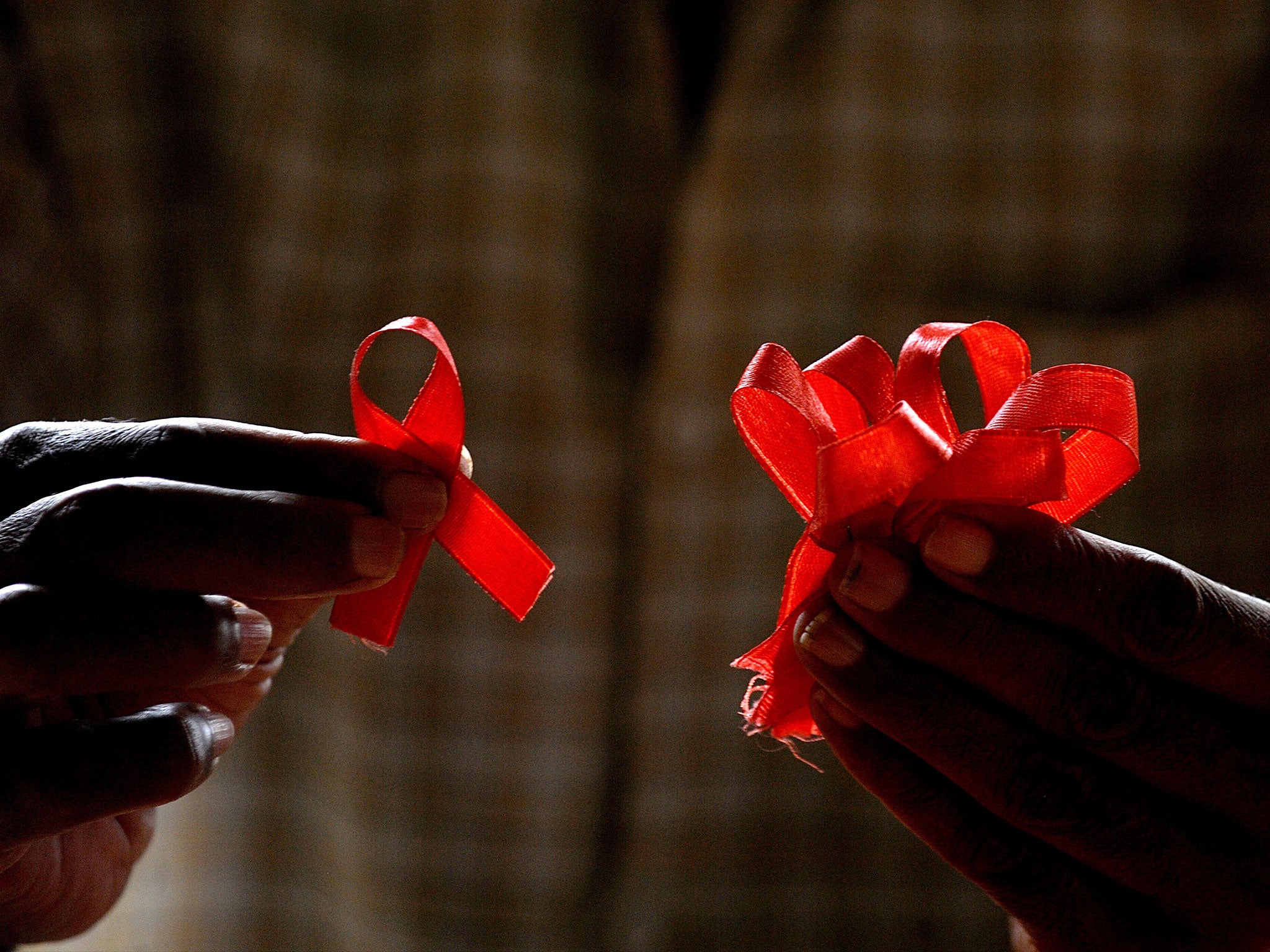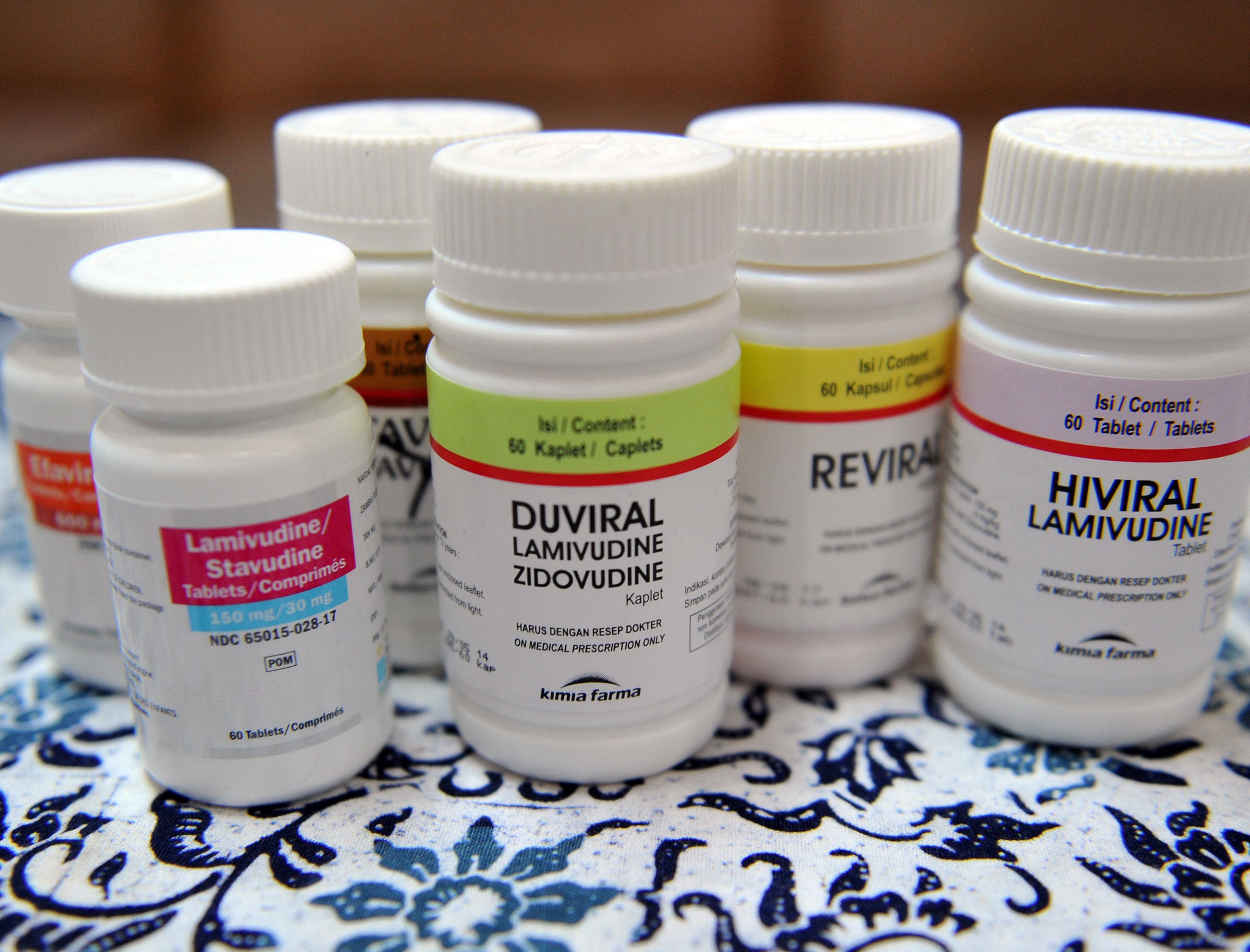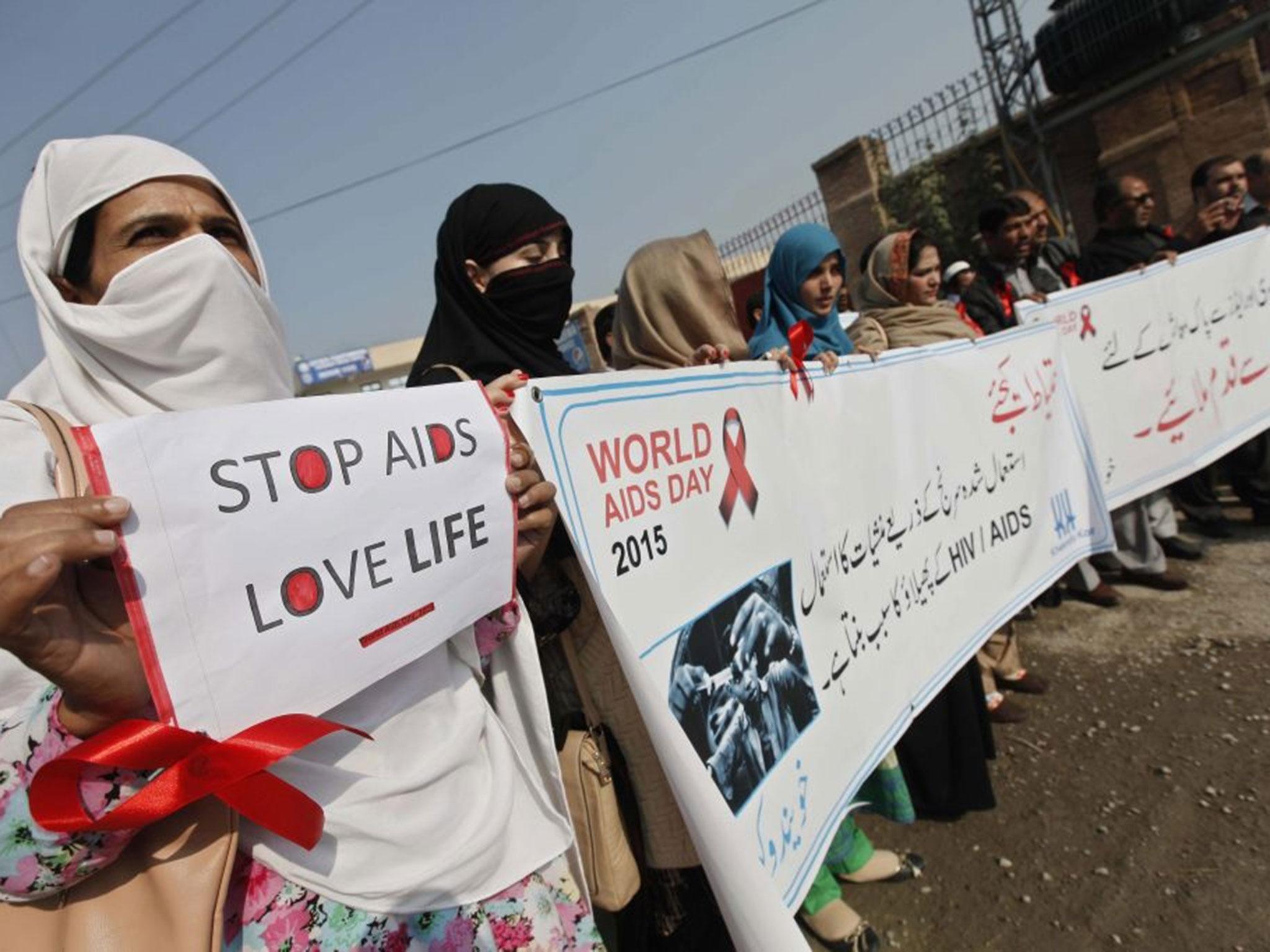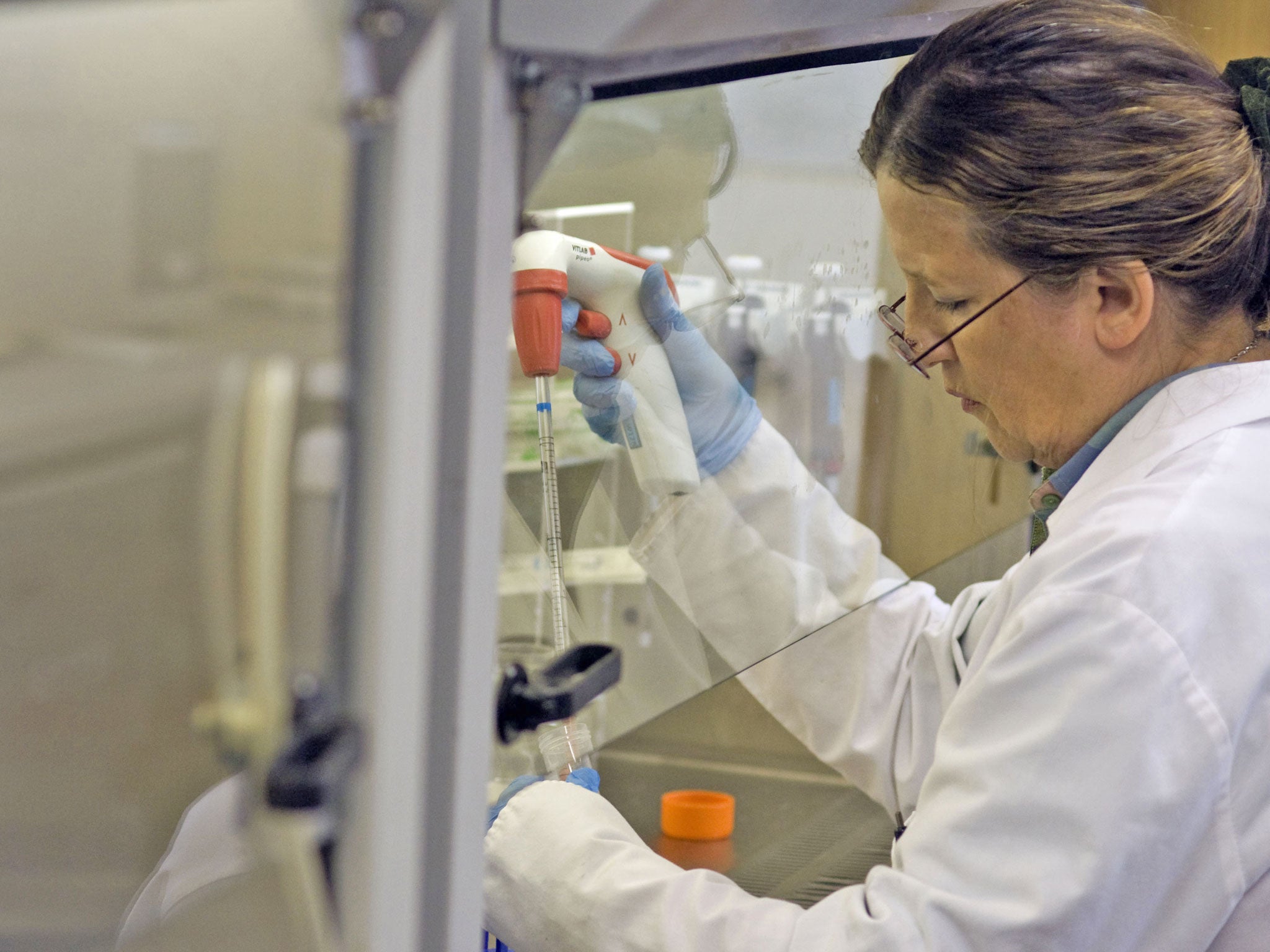Inside the hunt for a vaccine for HIV
Winston Ross offers a glimpse into the world of an American researcher who believes he may hold the key to creating a vaccine for HIV

Your support helps us to tell the story
From reproductive rights to climate change to Big Tech, The Independent is on the ground when the story is developing. Whether it's investigating the financials of Elon Musk's pro-Trump PAC or producing our latest documentary, 'The A Word', which shines a light on the American women fighting for reproductive rights, we know how important it is to parse out the facts from the messaging.
At such a critical moment in US history, we need reporters on the ground. Your donation allows us to keep sending journalists to speak to both sides of the story.
The Independent is trusted by Americans across the entire political spectrum. And unlike many other quality news outlets, we choose not to lock Americans out of our reporting and analysis with paywalls. We believe quality journalism should be available to everyone, paid for by those who can afford it.
Your support makes all the difference.Louis Picker stomped through the house, growled at his dogs, then slumped down at the bottom of the staircase, dejected. “I can’t do it anymore,” the immunologist told his wife. “Yes, you can,” she said. “It’s not going to work, ” he said. “It’s going to work, ” she replied. “It’s going to work”. Picker has had this conversation with his wife, Belinda Beresford, several times, because after 30 years of immunology research, the 59-year-old is on the verge of launching human trials for a vaccine that could stop Aids, an epidemic that has become something of an afterthought decades after it began to affect gay men in America.
For many in the developed world, complacency has set in, largely thanks to a regimen of antiretroviral drugs that allow people with HIV to live long and healthy lives, and decades of failed attempts to develop a vaccine. Much of Picker’s work now involves fighting for grant money in a dwindling pot of research funds to keep his laboratory at Oregon Health & Science University running.
To win those grants, he must continually prove that his unorthodox approach to creating a vaccine is probably going to work, which means that he needs a string of victories in the laboratory. “Science has its ups and downs,” he says. “You only get rewarded for the ups.”
Each day’s progress is critical. Picker’s vaccine has shown remarkable results in rhesus macaque monkeys – results that HIV researchers closely watch. “There’s a pretty strong consensus that it’s one of the two or three most promising approaches we have in the field,” says Guido Silvestri, a leading immunologist at Emory University School of Medicine. “This is not just a monkey curiosity.”
But promising is not enough, and just one tough morning in the lab might mean the whole thing’s over. “Sometimes, he doubts himself, ” Beresford says. “He’s tired. He has a rambunctious six-year-old. He feels guilty because he’s not home enough.” In 1984, US Secretary of Health and Human Services Margaret Heckler expressed hope that the storm would subside, that science might have a vaccine for HIV within two years.

Fortunately, Picker is dogged, and Beresford is patient – the two married about eight years ago and have yet to go on a honeymoon. After he growled at their dogs that night, she poured him a shot of Laphroaig, his favourite scotch, and sat with him in a guest room that has five vintage steel Colnago bicycles hanging on the walls. Picker sipped his whiskey and gazed at his bikes, hoping he’ll someday have enough free time to ride them every morning. But he won’t have that luxury until he can prove his Aids-orphaned stepson, Thabo, correct. “LP’s gonna do it,” the 17-year-old likes to say. “LP’s gonna stop Aids.”
Picker first met Thabo in Johannesburg in 2009, a few months after meeting Beresford, a journalist who had interviewed him for a story. She had adopted Thabo when he was just two. He was a stubborn, independent child with big brown eyes, born virus-free even though his biological mother had Aids. Thabo considered strangers cautiously, so when Picker arrived at the airport to meet him, he brought two suitcases. One carried his clothing. The other contained baseball gloves and an American football to beguile the nine-year-old. Now, seven years later, Picker lives in Portland, Oregon, with Beresford, Thabo and five other children, four from previous relationships and one they had together. Long before their family took shape, Picker was working to stop the spread of HIV. His fight began during his residency in Boston in the early 1980s, in the first years of what would become the global Aids epidemic. “It was sort of a rumour then,” Picker says. “The storm was coming.”
In 1984, US Secretary of Health and Human Services Margaret Heckler expressed hope that the storm would subside, that science might have a vaccine for HIV within two years. Instead, a decade passed, and by 1994, Aids was the leading cause of death for Americans ages 25 to 44. In the past three decades, four vaccines have made it to human trials, but none made it to market. Picker published his first paper on AIDS in 1985 but then shifted his focus away from the disease; he went to Stanford to study immunopathology and hematopathology. But as the years dragged on, people close to him – a cousin, a classmate, a friend – died of Aids. “It had an impact on me, ” he says. “It resonates with you in a way that somebody who’s 90 and dying of cancer doesn’t. It’s personal. It’s a titanic struggle against a very wily enemy.”

By 1993, the National Institutes of Health (NIH) had begun a hunt for immunologists interested in Aids research. (The field had previously been dominated by virologists, who had a better understanding of the vector and the virus, than the immune system’s response.) The agency offered to throw grant money at the problem. “I immediately switched,” Picker says. Two years later, he began working on a new approach to studying T cells, which keep us healthy by remembering how to fight pathogens (disease-causing microorganisms) that they’ve already come across. Each time they encounter a pathogen, T cells specific to it rush into battle, expanding and migrating via the blood into the tissues. When pathogens stimulate T cells, they respond by deploying small molecules called cytokines to knock out the infection.
Picker devised a way to understand these cytokines inside T cells, which “revolutionized the field of immunology,” says Andrew Sylwester, the manager of Picker’s lab, “even though he doesn’t get credit for it.” His “cytokine flow cytometry” allowed him and other scientists to not only count cytokines but know their function. Picker needed a virus on which to test his technique. In those days, it was too difficult to acquire blood from HIV-positive subjects, and experts wrongly assumed those infected with the virus had poorly functioning immune systems. He considered mumps but soon found a better adversary: cytomegalovirus (CMV), a virus in the herpes family.
This was ideal because half of the US population is infected with it, most without symptoms. His technique worked, and it helped researchers learn how CMV affected the immune system. Previous studies revealed that the body’s T cells responded to the virus, but until Picker came along, no one had been able to examine the quality and quantity of the cells’ response. In 2001, Picker replicated the results of the CMV assay using blood from HIV-positive subjects – while people with Aids continued dying by the hundreds of thousands each year. As Picker continued his research, scientists developed a series of antiretroviral drugs that slowly downgraded HIV to a chronic disease, as opposed to a deadly contagion, at least in the developed world. But globally, Aids is still killing a lot of people, largely because most of those infected in poorer countries don’t have access to the drugs.
According to the World Health Organisation, 1.1 million people died from Aids in 2015. In the US, 50, 000 new cases of HIV are reported every year. Worldwide, the number is 2 million. Every time news reports come out about Picker’s research, he fields a series of phone calls from HIV-infected patients, their friends and their family. “Can I be in your trial?” people ask him. “Please, can you save my son?”
Much of the HIV research today is focused on finding better antiretrovirals. Efforts to create a vaccine have centred on generating antibodies that find pathogens in the blood, smother an infection before it takes hold or manipulate T cells into fighting off the virus. The measles vaccine, for example, encourages T cells to fight in response to the inoculation, after which they go back to a resting state. “The soldiers go back to the base,” Picker says. When the pathogen returns, the T cells reactivate. “They grab rifles and arm themselves, but it takes two weeks.”
Against HIV, T cells are outgunned. The virus replicates quickly and is “immune-evasive,” meaning it can overwhelm or dodge the immune system’s attempts to fight, leaving T cells no time to mount an adequate defence before the virus has taken root. What’s worse, HIV embeds itself in T cells, which means the T cell response to an HIV onslaught leads to its own destruction – the proliferating T cells actually spread the virus. Picker’s CMV research led him to wonder if he could trick the body’s T cells into creating and maintaining an “armed” response to a virus to which they’d never been exposed. That would allow the T cells to react quickly when first confronted with an HIV infection. CMV presented a new opportunity, because the virus leads to an extraordinary effort by T cells, which is why 80 per cent of the population is carrying it without developing symptoms. Top HIV researchers say this approach could be combined with a more traditional antibodies-based vaccine.
Dan Barouch, director of the Centre for Virology and Vaccine Research at Beth Israel Deaconess Medical Centre in Boston, created one that’s headed for human trials. His method focuses on antibodies, which can have a difficult time spotting the swift-moving and mutating HIV. But combining his approach with Picker’s could be effective – the antibody method could prevent some infections, and Picker’s technique could knock down the ones that slip through. “Louis’s program is one of the most creative, innovative and impactful efforts in the field,” Barouch says. “The data is very promising.”
But so far, only for monkeys. For more than 15 years, Picker has been working at the Oregon National Primate Research Centre, home to more than 5,000 rhesus macaque monkeys, 21 baboons and, more important, Jay Nelson, one of the world’s foremost experts in CMV. On a steel table deep inside the lab in Beaverton, Oregon, researchers sedate three female rhesus macaques so they will more willingly submit to a blood draw. Tattooed with numbers to identify each of them, they’ve all been inoculated with Picker’s CMV vaccine to see if it will allow them to fight off the simian immunodeficiency virus (SIV) – the simian version of HIV. The vaccine works by adding HIV genes into a weakened form of CMV, which tricks the T cells into arming themselves to battle the virus. In 2008, two years after Picker began vaccinating monkeys against SIV, four of the 12 macaques inoculated proved his vaccine could work: They’d knocked infection levels back to a minimum, and SIV didn’t take root.
Four years later, the results improved. Of 150 inoculated animals, more than half were effectively cured. Picker’s findings were published first in the journal Science and then in Nature in 2013. “It’s a biologically stunning result,” says Marcel Curlin, an Oregon Health & Science University infectious disease specialist running the HIV trials. “For the first time, he trained the immune system to clear a virus from an infected animal. It sent huge shockwaves through the HIV community and fuelled an enormous enthusiasm and energy to move the program forward.”

The monkey results are some of the most promising news in HIV research since a clinical trial that took place in Thailand between 2003 and 2009. The trial combined two vaccines, and that cocktail reduced the rate of infection among participants by 31 percent. It was encouraging but not good enough to be a marketable vaccine. Then came terrible news, in a different trial. From 2004 to 2007, 3, 000 patients considered at high risk for developing HIV enrolled in a trial to test a vaccine developed by Merck. The idea was not to prevent infection but to control the viral loads after infection, so subjects could survive. It didn’t work. Not only did the vaccine fail to stop HIV, but there was a 48 per cent higher rate of infection in the group that received the vaccine than among those who took a placebo. Researchers were dismayed. “Merck pulled out altogether, ” says Curlin. “Many programs shut down. People changed careers.”
The lesson, says Silvestri: “It’s really hard to make a vaccine. The field was much more pessimistic after the Merck trials.”
Picker, however, was undeterred. “I predicted the outcome of the Merck trial. I knew it wouldn’t work. It’s a T cell vaccine, but it’s very different from our T cell vaccine. It didn’t discourage me at all.”
But he did ask Tony Fauci, director of the NIH, if the Merck trial would dampen support for similar work, if the research community would give up. Fauci’s response: “We’re not going to give up. We’re going to double down.”

In the early development lab at the primate centre, Wilma Perez, one of Picker’s research associates, spends her days infecting dozens of flasks of cell cultures with CMV, sometimes as many as 150 a day. She is careful to don protective clothing, booties, a mask and gloves before entering one of the lab’s highly sensitive areas. Any kind of contamination – mycoplasma, fungus, mould, bacteria – could shut down the process and delay the vaccine manufacturing. Because the virus takes weeks to grow, there isn’t time to spare. Picker’s lab is racing to make enough of this vaccine by the time the trials are supposed to begin, because its funding could run out. Oregon Health & Science University is competing against more established institutions that have much more experience in the field. There’s also the danger that support will dry up as the virus increasingly becomes a problem of only developing nations.
That means Picker’s research needs to show more results as quickly as possible, so neither he nor any of his 25-person staff knows what a “normal” workweek looks like. The team’s results are promising, but they need to improve before they can bring a vaccine to market. “It only worked in 50 to 60 per cent, ” Picker says of the macaque results. “How do we make it 100 per cent? ”
Picker may be in a hurry, but he doesn’t rush the science. “If I had another 40 years, I’d be absolutely sure it would work. [But] I want to get this done in the next 10 or 12 years. All it takes is somebody at the NIH or high up in the Gates Foundation to say it’s done, it doesn’t work, and we’re dead. ”
He’s on his way. In June, the NIH awarded Picker’s lab $14m (£11.2m) to continue his work (Barouch got the same amount), a nice addition to the $25m (£20m) grant he landed from the Bill & Melinda Gates Foundation in 2014. But human trials will cost 10 times that amount, Picker estimates, so his fundraising can’t stop. “It’s really expensive. It’s really slow. It’s really frustrating,” he says. “This is not like designing a new iPhone. This is something that’s been designed for millions of years, by nature, by iterative mistakes, and we’re trying to unravel it.”
If this vaccine works in humans – and Picker is optimistic it will – it could be combined with therapeutic drugs or other vaccines to effectively cure the virus. And, in theory, Picker’s CMV experiment could be useful against other illnesses too: tuberculosis, malaria, herpes simplex 2, hepatitis B and maybe even some forms of cancer, because all of those diseases attack T cells in a similar way. “Imagine you have a soldier with a gun,” Picker says. “The gun is the same, but now he has goggles that can see x, y or z enemy.”
For any of Picker’s soldiers to be deployed in the real world, though, he will have to make a vaccine that not only works but can be produced cheaply enough that pharmaceutical companies can make a profit. “The government doesn’t make vaccines,” he says. “Big Pharma makes vaccines. Big Pharma doesn’t want to pay for the research; they want to swoop in and take it over.”
Picker will be thrilled if that happens, because bringing a drug to market is the only way his vaccine can save lives. And then, maybe, he’ll get to go on his honeymoon.
© Newsweek
Join our commenting forum
Join thought-provoking conversations, follow other Independent readers and see their replies
Comments